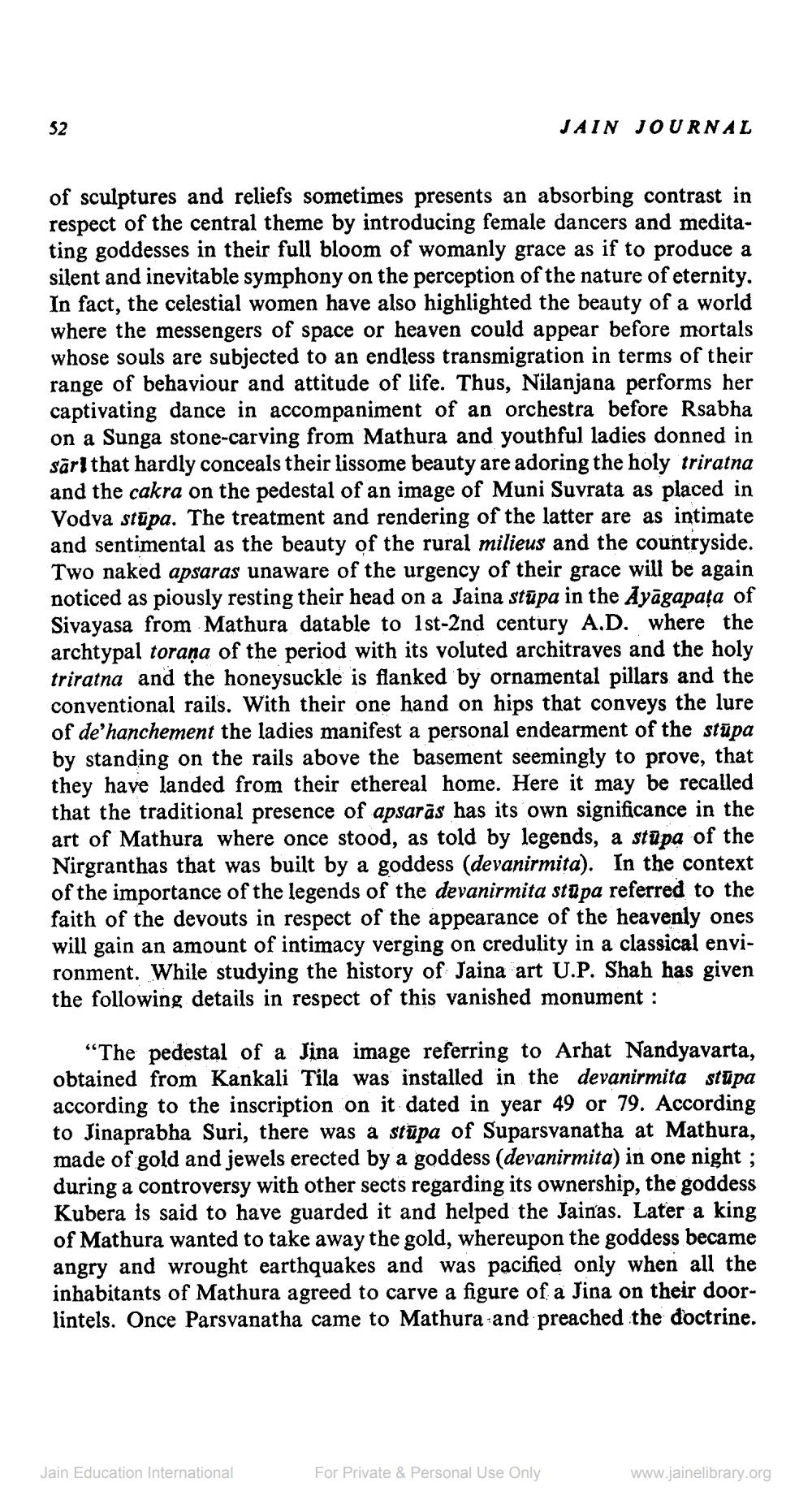________________
52
of sculptures and reliefs sometimes presents an absorbing contrast in respect of the central theme by introducing female dancers and meditating goddesses in their full bloom of womanly grace as if to produce a silent and inevitable symphony on the perception of the nature of eternity. In fact, the celestial women have also highlighted the beauty of a world where the messengers of space or heaven could appear before mortals whose souls are subjected to an endless transmigration in terms of their range of behaviour and attitude of life. Thus, Nilanjana performs her captivating dance in accompaniment of an orchestra before Rsabha on a Sunga stone-carving from Mathura and youthful ladies donned in sarl that hardly conceals their lissome beauty are adoring the holy triratna and the cakra on the pedestal of an image of Muni Suvrata as placed in Vodva stupa. The treatment and rendering of the latter are as intimate and sentimental as the beauty of the rural milieus and the countryside. Two naked apsaras unaware of the urgency of their grace will be again noticed as piously resting their head on a Jaina stupa in the Ayagapata of Sivayasa from Mathura datable to 1st-2nd century A.D. where the archtypal toraṇa of the period with its voluted architraves and the holy triratna and the honeysuckle is flanked by ornamental pillars and the conventional rails. With their one hand on hips that conveys the lure of de'hanchement the ladies manifest a personal endearment of the stūpa by standing on the rails above the basement seemingly to prove, that they have landed from their ethereal home. Here it may be recalled that the traditional presence of apsaras has its own significance in the art of Mathura where once stood, as told by legends, a stupa of the Nirgranthas that was built by a goddess (devanirmita). In the context of the importance of the legends of the devanirmita stūpa referred to the faith of the devouts in respect of the appearance of the heavenly ones will gain an amount of intimacy verging on credulity in a classical environment. While studying the history of Jaina art U.P. Shah has given the following details in respect of this vanished monument :
JAIN JOURNAL
"The pedestal of a Jina image referring to Arhat Nandyavarta, obtained from Kankali Tila was installed in the devanirmita stūpa according to the inscription on it dated in year 49 or 79. According to Jinaprabha Suri, there was a stupa of Suparsvanatha at Mathura, made of gold and jewels erected by a goddess (devanirmita) in one night; during a controversy with other sects regarding its ownership, the goddess Kubera is said to have guarded it and helped the Jainas. Later a king of Mathura wanted to take away the gold, whereupon the goddess became angry and wrought earthquakes and was pacified only when all the inhabitants of Mathura agreed to carve a figure of a Jina on their doorlintels. Once Parsvanatha came to Mathura and preached the doctrine.
Jain Education International
For Private & Personal Use Only
www.jainelibrary.org




